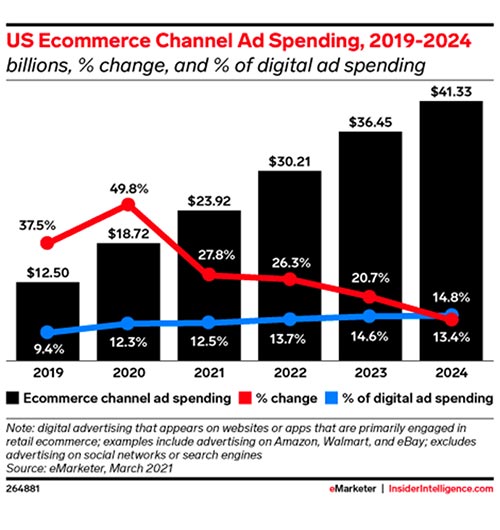One of the most hard-to-understand aspects of consumer behavior is: what makes us buy something? If you pause for a moment and think about your last 5 purchases, can you explain each of them with a reason or does it feel somewhat random?
Marketers for the longest time have contended that knowing who you are demographically is a good bet to determine what you are likely to purchase. Is that really true? The other day I saw a teenage girl driving a Ford F-350 truck. I wondered: why are most Ford ads targeting and featuring men? The origin of the thinking that demographics determine purchases came from the early days of TV ads where the only way to target consumers was from the TV shows they watched. There was no other data whatsoever for targeting individuals based on their specific interests or intent to purchase.
Fast-forward to 2022, platforms like Facebook and Google have amassed petabytes of data on consumer behavior – everything you post, search, like, email, text, watch and share is tracked and used to target you with ads. This of course is a lot more effective than targeting consumers based on TV shows they watch because the data indicates actual interests shared by each consumer, not the perceived interests based on them being part of a large group of people with similar attributes.
Still, the question becomes: how much of what we are likely to purchase is based on what we share about ourselves? Some of it certainly is based on that, for example posting that I am traveling to Europe this Summer could be a cue to a travel brand of my likelihood of booking a hotel in Europe.
One of the biggest reasons for Amazon’s success in retail sales is that Jeff Bezos understood something very basic and human about what we buy and why we buy. It is that we are creatures of habit. If you go back to my earlier question, I am willing to bet that 90% of what you purchased in the last month are things similar or identical to what you probably purchased in the past. There is actually research to back this idea. If you have any doubt, read this book by Charles Duhigg, available on – you guessed it – Amazon. Amazon quickly learned and implemented algorithms that use data from whatever you purchased in the past to make recommendations for what you should purchase. Amazon even provides a list of things you purchased in the past, called “Buy Again.” This list seems to drive the highest purchases – which is why Amazon places it as the very first menu item you see when you log in.
So, why is retail media a threat to walled gardens like Facebook, Google and the ever rising social media options? The truth is, companies that own the largest amounts of data about consumer purchases have woken up to the large digital advertising opportunity that Facebook and Google dominate. The data they have collected can deliver significantly better personalization than the walled gardens can as it is predominantly data on previous purchases.
Large retailers like Amazon, Walmart, Target and others have recently realized that they actually have data that is even more valuable than what Facebook and Google have – data about your past purchases. It turns out that this data is a lot more valuable and more accurate at predicting your future purchases than what you share on social media or search for. This is at least one of the reasons why Amazon’s advertising business has soared from being almost unknown to #3 after Google and Facebook. This is also why it seems that each month a new large retailer (Best Buy and Kroger being the latest) announces a “Retail Media Network,” which is essentially a new form of walled garden except that it is powered by actual purchase data – a lot more effective at predicting future purchases than social data. Furthermore, digital advertising carries much better margins than retail sales, so these companies are also thinking about evolving their business models to a higher margin business.
This trend is not limited to just retailers, in fact, the likely winners in this race are yet to show their hand. New age companies like Instacart, Doordash, Uber, GoPuff, Grab and Gojek are all building large advertising businesses using similar data. Even Microsoft, with their recent purchase of Xandr, may be thinking along these lines. They are clearly seeing the same opportunity Amazon saw in using their data to build better personalized advertising than even Google and Facebook have.
Brands are clearly enamored with this idea of personalizing ads with product recommendations and are starting to invest in retail data powered media. According to eMarketer, Retail Media spend is growing at over 27% year over year (according to eMarketer, it is likely underestimated as they are using e-commerce marketing data as a proxy). It has also evolved significantly from just “search” on retail sites to display ads and video. So, retail is likely to become even more attractive to large brands.
In 2022, retail media is going to significantly change the landscape of digital advertising. This is good news for marketers because it provides them with more media options that may be even better for personalized advertising. This is also good news for consumers as they will see more personalization and relevant ads.

